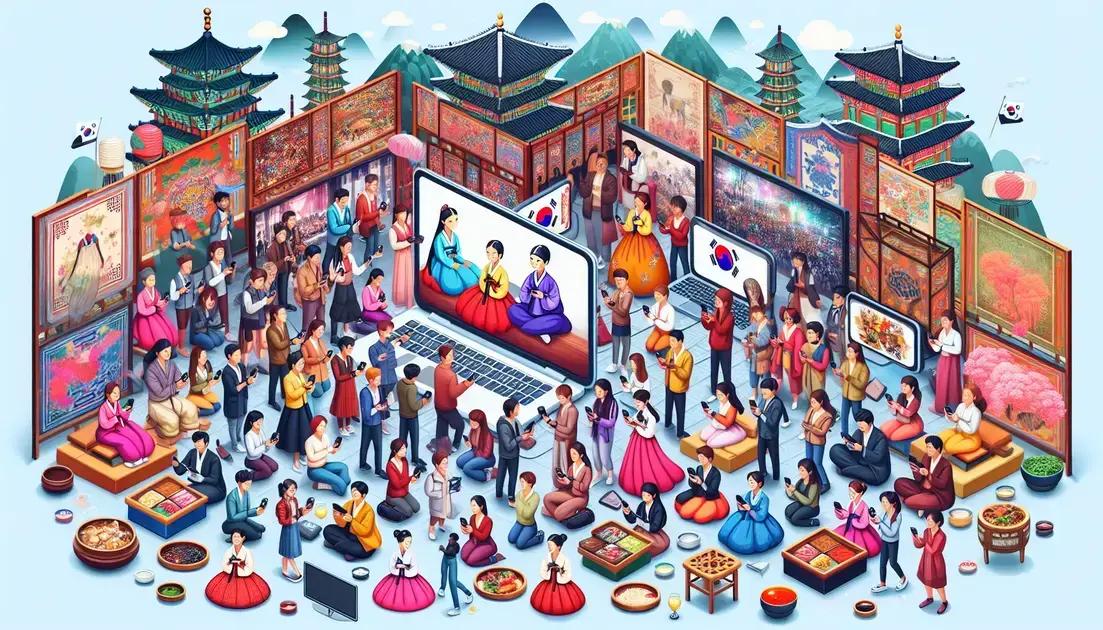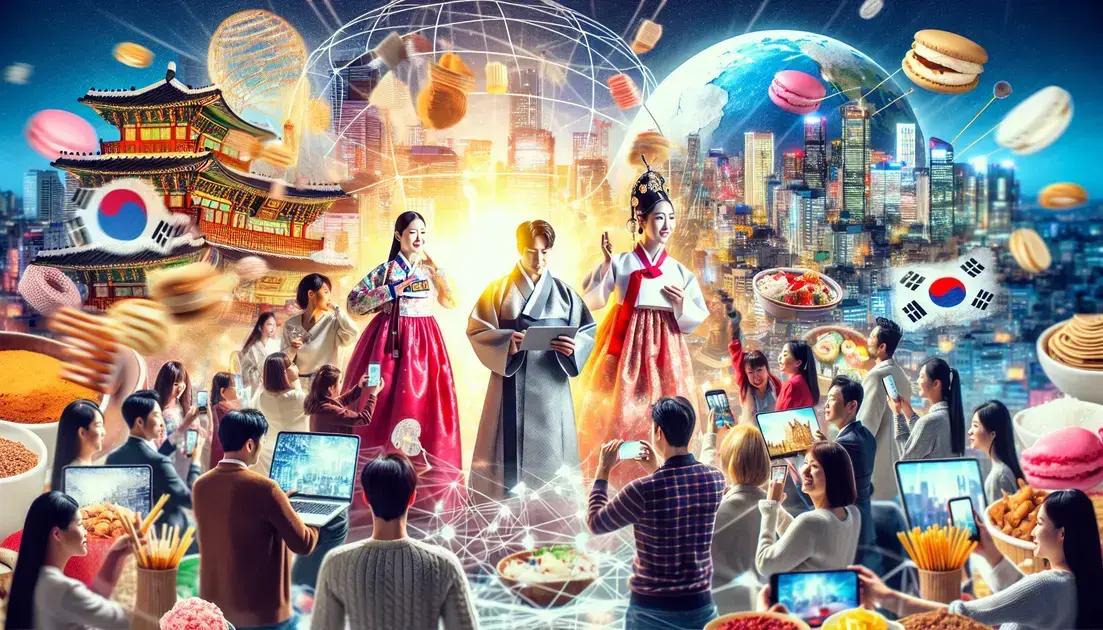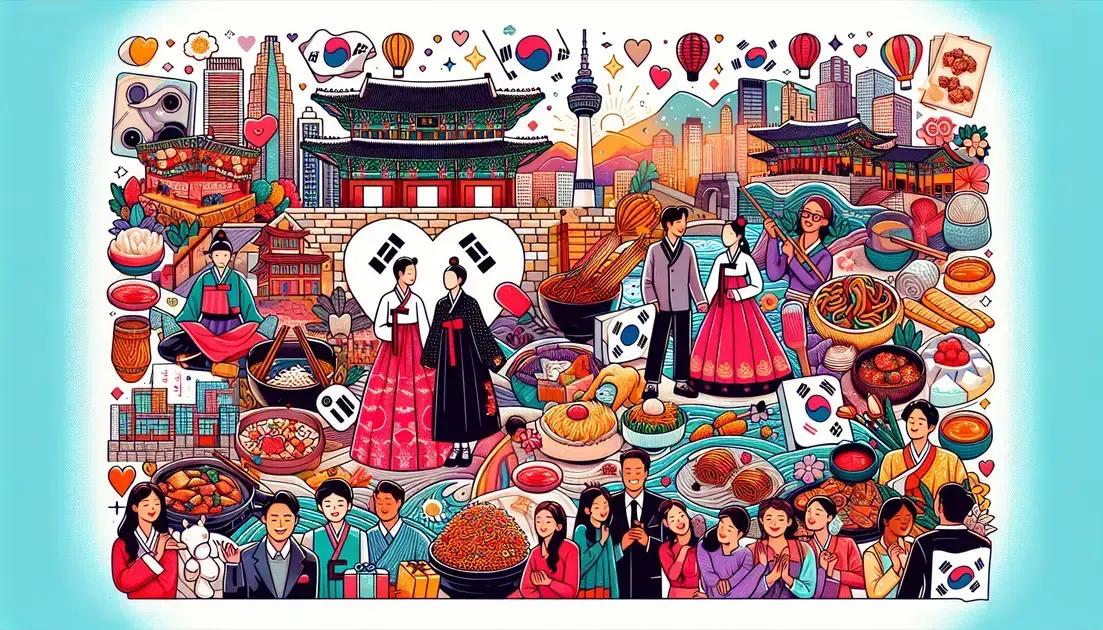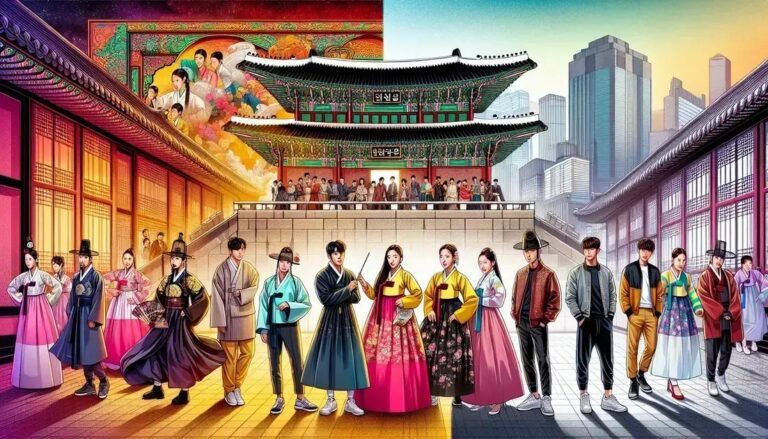The Role of K-Dramas in South Korea’s Soft Power Construction Explained
Anúncios
**K-Dramas**, once a niche genre, now captivate audiences worldwide with their unique storytelling and cultural insights. This fascination isn’t just entertainment; it’s a strategic tool for South Korea to enhance its **soft power**. Discover how these dramas achieve such influence through global popularity, economic impact, and cultural narratives.
How K-Dramas Shape South Korean Cultural Influence
South Korea’s K-Dramas are more than just television shows; they are cultural phenomena that have significantly impacted the global cultural landscape. These dramas often incorporate diverse elements of Korean culture, from traditional customs to modern urban life, making them a captivating watch for international audiences. By showcasing aspects of everyday Korean life, food, fashion, and societal values, K-Dramas naturally promote Korean culture to a global audience.
K-Dramas often portray compelling narratives that reflect South Korea’s cultural heritage as well as contemporary issues. They skillfully blend historical elements with modern storytelling, allowing viewers to gain insights into Korea’s past and present. The detailed and relatable character arcs invite audiences worldwide to connect with the cultural context portrayed, often sparking interest in visiting South Korea or learning the Korean language.
Additionally, the strategic use of music, including K-POP soundtracks, amplifies the cultural export. The intricate storytelling combined with such musical elements provides a full cultural package that effectively communicates Korean aesthetics and emotions. Beyond entertainment, K-Dramas serve as a soft power tool, subtly influencing perceptions and increasing Korea’s cultural footprint on the world stage.
The Mechanisms of Cultural Influence
One of the key mechanics through which K-Dramas exert cultural influence is their accessibility via streaming platforms. This widespread availability has led to a diverse global fanbase, where viewers discuss and share cultural elements featured in K-Dramas. The fashion trends, beauty standards, and social behaviors depicted often become points of interest, further ingraining Korean culture into everyday global conversation.
K-Dramas’ narratives often highlight themes such as family dynamics, friendship, romance, and personal growth. These universal themes, delivered with unique cultural twists, invite international audiences to delve deeper into Korean socio-cultural frameworks. These narratives not only entertain but also educate, fostering a cross-cultural understanding that enhances South Korea’s global cultural influence.
The Global Popularity of K-Dramas and Its Impact

The unstoppable rise of K-Dramas across the globe is a testament to their unique appeal and storytelling prowess. These dramas, with their engaging plots and relatable characters, have drawn audiences from various cultures, creating a universal fanbase. Streaming platforms have played a significant role in this phenomenon, offering easy access to viewers worldwide, thereby increasing the visibility and popularity of K-Dramas.
The global popularity of K-Dramas significantly impacts the perception of South Korea. They serve as a cultural bridge, introducing international audiences to South Korean language, traditions, and modern life. This increasing interest often translates into a desire to experience Korean culture firsthand, boosting tourism and interest in Korean products, such as beauty and fashion brands.
Popularity also extends to social media, where fan communities thrive, discussing plot twists, character developments, and cultural nuances. These online interactions further enhance the reach of K-Dramas, creating a cycle of curiosity and engagement that benefits South Korea’s cultural export.
Economic and Cultural Ripple Effects
Economically, K-Dramas contribute to the global spread of Korean businesses. Production companies that create these dramas often partner with international firms, enhancing collaboration and economic opportunities. Additionally, the settings, fashion, and products featured in these dramas frequently become popular items among viewers, boosting the South Korean economy through increased demand for related goods and services.
K-Dramas’ impact isn’t just economic; it fosters a deeper cultural appreciation. The themes explored in these series resonate with viewers, who identify with the universal human experiences portrayed. This connection nurtures an appreciation for South Korean culture, promoting it as a desirable and influential part of global culture.
K-Dramas as a Tool for Promoting Korean Values
K-Dramas serve as a powerful medium for conveying core Korean values to an international audience. These dramas frequently explore themes such as family, respect for elders, education, and community, deeply rooted in Confucian principles that define South Korean society.
In many K-Dramas, family dynamics play a central role, showcasing the importance of familial bonds and filial piety. The narratives often depict multigenerational households, emphasizing respect for elders and highlighting traditional values that resonate across cultures. These portrayals offer viewers a glimpse into Korea’s rich cultural traditions and promote a deeper understanding and appreciation of its core societal values.
Educational achievement is another recurring theme in K-Dramas, reflecting the real-life emphasis placed on academic excellence in Korean society. Characters often face intense pressures and challenges related to education, which audiences may find both intriguing and enlightening. This focus sheds light on the societal expectations and the value placed on education as a means of personal and national progress.
Community and Collective Harmony
The concept of community and collective harmony is skillfully woven into many K-Dramas. Characters frequently engage in cooperative efforts, whether within neighborhoods, workplaces, or schools, underscoring the Korean belief in working together towards common goals. Such narratives foster a sense of global camaraderie, encouraging audiences to value cooperation and mutual support.
Additionally, K-Dramas often touch on themes of loyalty, honor, and integrity, reflected in the characters’ relationships and decision-making processes. These dramas present moral dilemmas and the pursuit of doing the right thing, resonating with viewers who value honest and ethical behavior.
The Economic Influence of K-Dramas in International Markets

K-Dramas have become a significant economic force in international markets. Their global popularity has led to increased demand for Korean content, influencing markets beyond entertainment. Streaming services compete for exclusive rights to popular K-Dramas, boosting their subscriber numbers and revenue. This trend showcases the substantial economic impact these dramas have worldwide.
Merchandising linked to K-Dramas is another thriving sector. Fans eagerly purchase products featured in their favorite shows, from fashion items and cosmetics to collectibles. This demand supports the expansion of South Korean brands into new markets, enhancing their international presence and profitability.
Tourism is another beneficiary of K-Dramas’ economic influence. Many viewers become interested in visiting filming locations, promoting travel to South Korea. This increase in cultural tourism supports local businesses and contributes to the national economy, showcasing the power of media-driven tourism.
Global Partnerships and Industry Growth
The production quality of K-Dramas has spurred international co-production deals, fostering greater collaboration between South Korean entertainment companies and global media entities. These partnerships enhance creative exchange, opening new avenues for cultural products and talent exchange on the world stage.
Additionally, the success of K-Dramas demonstrates their potential as a scalable cultural export model. Rising demand for similar content in other languages encourages global content producers to adopt South Korean storytelling methods, stimulating the broader creative industry. The economic ripple effects extend to related sectors, such as tech and marketing, influencing how media is consumed and monetized globally.
Cultural Themes in K-Dramas that Attract Viewers
K-Dramas captivate audiences worldwide through rich cultural themes and storytelling. One notable theme is the portrayal of family and relationships, which resonates deeply with viewers. These dramas skillfully illustrate diverse family dynamics, highlighting the importance of close-knit relationships and traditional family roles prevalent in Korean culture.
Another engaging theme is romance, often depicted in unique and sentimental ways. K-Dramas frequently intertwine romance with humor, fantasy, or historical elements, creating a compelling mix that appeals to a broad range of audiences. The romantic plots are cleverly crafted, often featuring relatable characters navigating emotions and social challenges, which keeps viewers invested in the stories.
Social issues are also thoughtfully explored, addressing topics such as class disparities, gender roles, and generational conflicts. These narratives provide a window into Korean society, offering nuanced perspectives and promoting dialogue among international audiences who may encounter similar issues. The sensitive handling of these themes adds depth and meaning, reinforcing the dramas’ appeal and relatability.
Tradition Meets Modernity
The fusion of traditional and modern values is a recurring theme in K-Dramas. Many shows depict characters struggling to balance their heritage with the demands of contemporary life. This theme of reconciling the old with the new resonates with global viewers facing similar changes in their societies.
Additionally, themes of personal growth and redemption are prevalent in K-Dramas. Characters often embark on journeys of self-discovery, overcoming past mistakes and achieving redemption. These story arcs appeal to viewers interested in transformative stories, making them root for the characters’ success.
The Future of South Korean Soft Power Through K-Dramas

The future of South Korean soft power looks promising with the continuous evolution and global reach of K-Dramas. These cultural exports are positioned to play an even greater role in enhancing South Korea’s influence worldwide. As the demand for diverse content grows, K-Dramas are expected to expand their storytelling to incorporate broader cultural themes and innovative narratives, appealing to a more extensive international audience.
Advancements in technology are set to further amplify the reach of K-Dramas. Enhanced streaming services and emerging technologies like virtual reality could provide immersive experiences, allowing viewers to engage with the content on a deeper level. These technologies could help K-Dramas reach even more global audiences, reinforcing Korea’s cultural influence.
The role of international collaboration in K-Drama production will likely increase. Co-productions with other countries can blend different cultural elements, creating unique content that appeals to viewers from multiple backgrounds. This approach not only enriches the storytelling but also strengthens global ties.
Expanding Cultural Dialogue
As K-Dramas continue to captivate international audiences, they foster cross-cultural dialogue. This exchange promotes understanding and appreciation of Korean culture, values, and perspectives, enhancing South Korea’s image abroad. Policymakers and cultural ambassadors can leverage this medium to convey positive messages and build stronger cultural connections.
The soft power of K-Dramas can also drive cultural tourism, as fans seek to explore the origins and locations of their favorite shows. This interest boosts the Korean economy and helps forge lasting cultural impressions on international visitors, further solidifying South Korea’s soft power influence on the global stage.
Conteúdo não disponível






